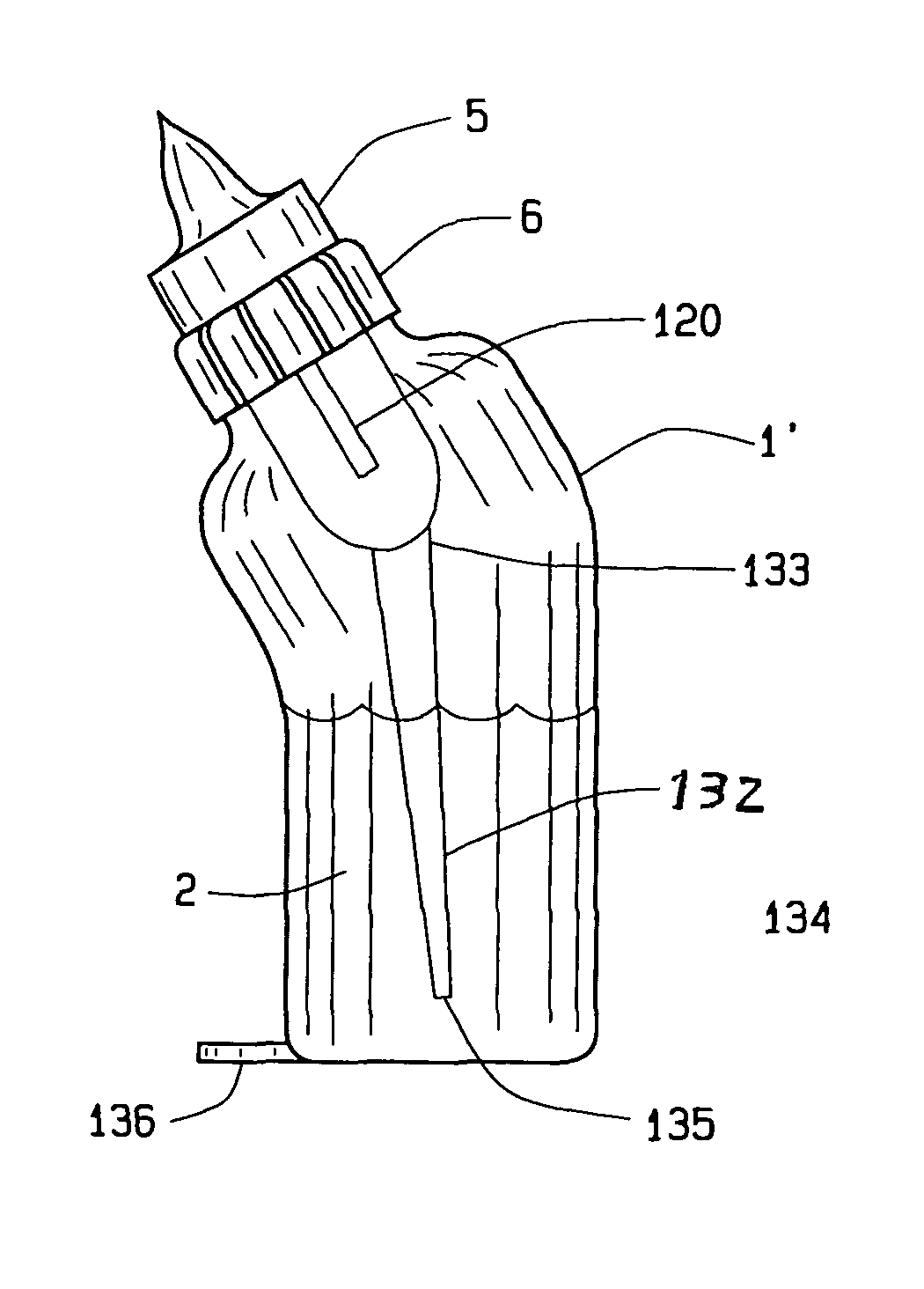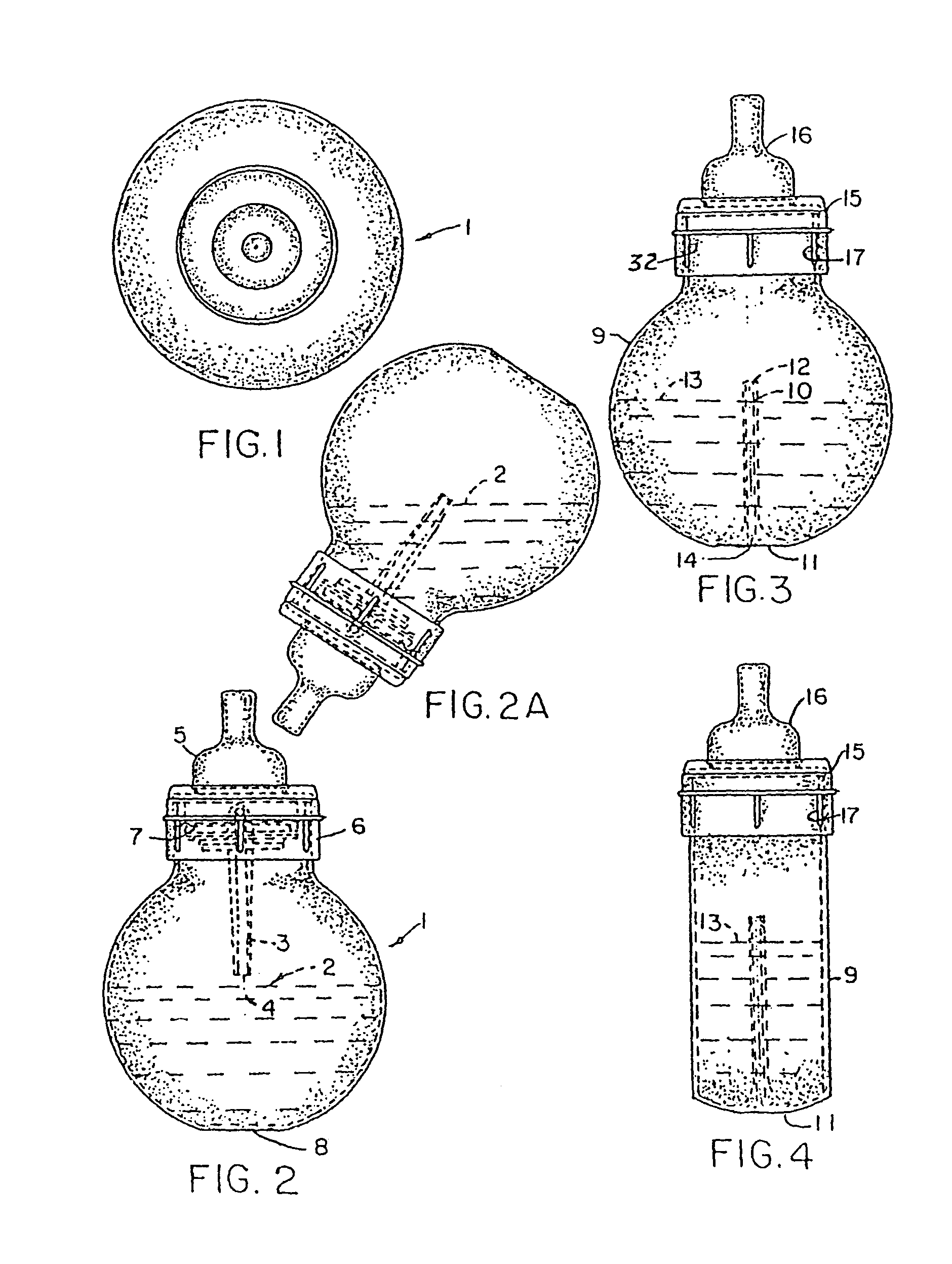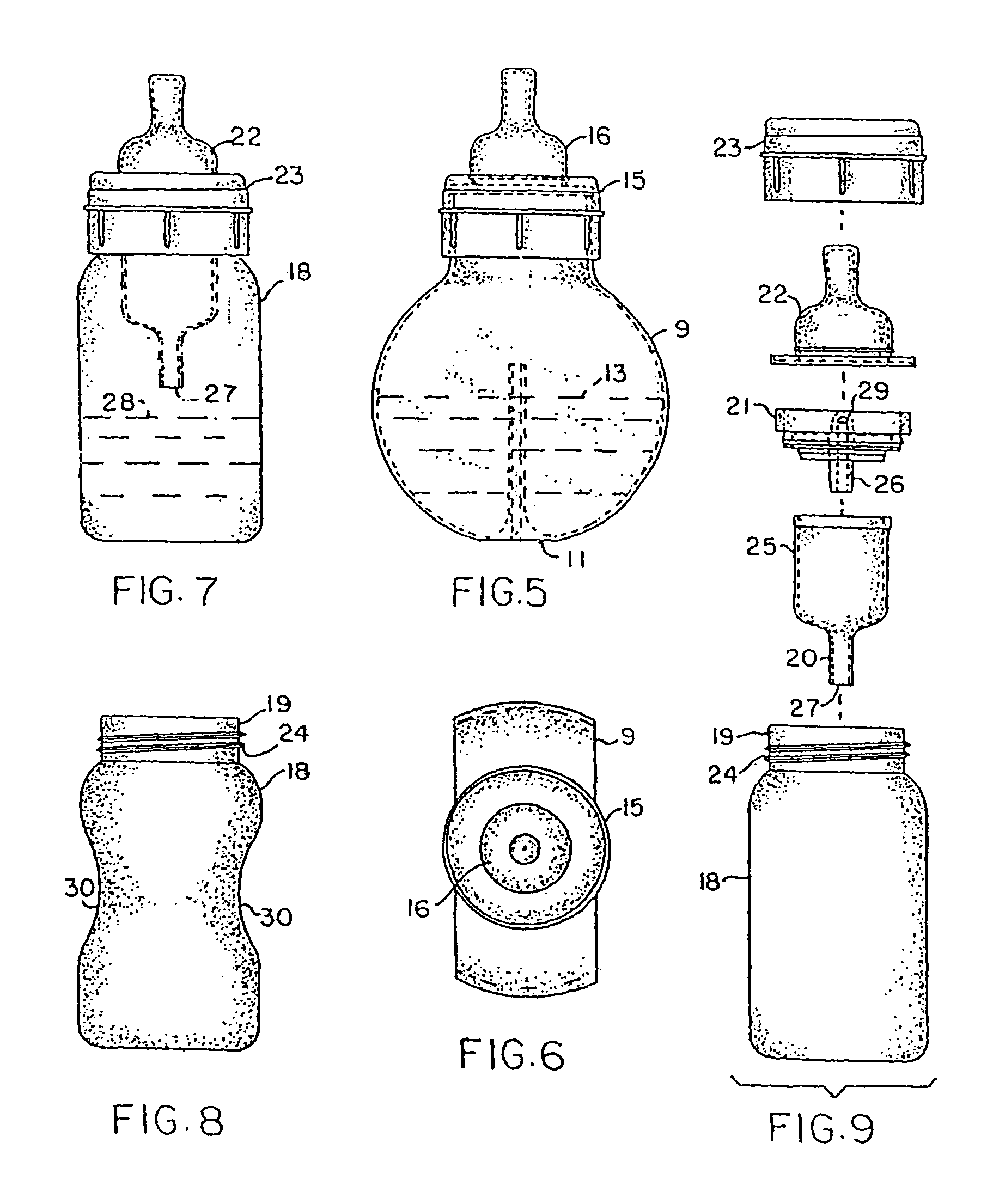Fully vented wide rim nursing bottle with canted vent tube
a bottle and vent tube technology, applied in the direction of feeding bottles, tea, etc., can solve the problems of increasing vacuum in the bottle, reducing the volume of liquid in the bottle, and unable to serve babies without drinking from ordinary glasses and cups, so as to prevent the leakage of liquid from the bottle
- Summary
- Abstract
- Description
- Claims
- Application Information
AI Technical Summary
Benefits of technology
Problems solved by technology
Method used
Image
Examples
Embodiment Construction
[0076]The present art overcomes the prior art limitations by providing a fully vented wide rim, or other size, nursing bottle that provides a tapering vent tube to eliminate vacuum within the container and prevent leakage from the container. In referring to the drawings, and in particular FIGS. 1 and 2, the fully vented, wide rim, or other size, nursing bottle preceding this invention is disclosed. It includes a spherical shaped container 1 that has ample volumetric capacity therein, so as to achieve the sought after results for this invention. That is, when a formula, such as at 2, is applied into the container, with the formula being applied at an amount that normally furnishes a feeding for the infant, it will only fill the container up to a level that is yet below the bottom of the vent tube 3, and more specifically distally to the insert and its vent port 4, as can be noted.
[0077]Thus, when the nursing bottle is not being overheated, any pressure built up within its container w...
PUM
 Login to View More
Login to View More Abstract
Description
Claims
Application Information
 Login to View More
Login to View More - R&D
- Intellectual Property
- Life Sciences
- Materials
- Tech Scout
- Unparalleled Data Quality
- Higher Quality Content
- 60% Fewer Hallucinations
Browse by: Latest US Patents, China's latest patents, Technical Efficacy Thesaurus, Application Domain, Technology Topic, Popular Technical Reports.
© 2025 PatSnap. All rights reserved.Legal|Privacy policy|Modern Slavery Act Transparency Statement|Sitemap|About US| Contact US: help@patsnap.com



